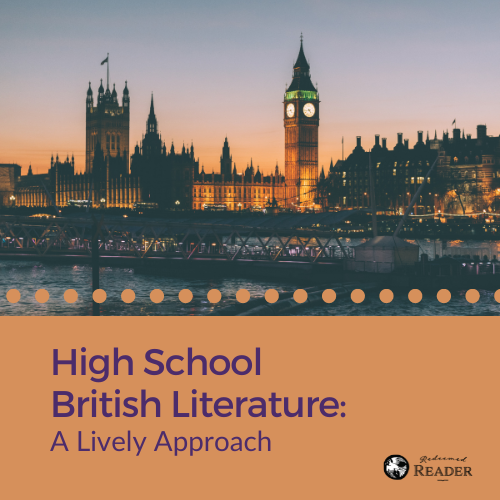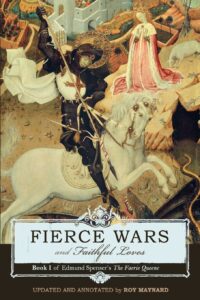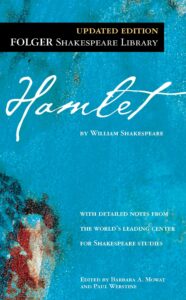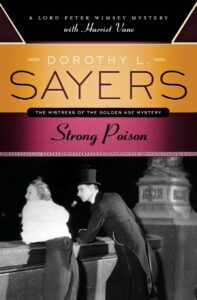High School British Literature: Dull and Difficult?
When I arrived at college, I was absolutely, 100% convinced that British lit was my jam. But it’s safe to say that most of my peers, unless they were already diehard bibliophiles, didn’t share that same love of obscure Victorian novels. Fast forward 30 years, and it’s a sure bet that many contemporary teens aren’t signing up to read Tess of the D’Urbevilles, Great Expectations, or Jane Eyre when they could be watching Jurassic World or Maverick. Frankly, even I’m having a challenging time re-reading some of these titles as my own brain has gotten used to more distraction via device use.
What to do? Know your students, first and foremost. And know your goals for your class. Are you after a broad chronological survey of British lit? Exposure to the key strengths of British lit? Analysis of the more common themes in British lit? And, be willing to change things up: read some titles aloud. Watch a movie. Add in some humor.
High School British Literature: A Lively Approach
I’ll be teaching my own three teens this year. Our lineup below is not for everyone, but it will demonstrate how I approach British literature with a lively approach in mind.
Knowing my own children includes knowing what we’ve already read (or listened) together as a family. I’m blessed with very well-read children, children who not only are fluent in King James/Shakespearean English, but who have performed Shakespeare on stage several times. Sure, I’ve read many books to them. But my teens are also avid readers on their own.


British Literature Survey Course
My goal is a British literature survey course, much like the American literature survey I taught last year. A survey course is designed to give students a broad overview of a culture’s literature. Generally, students start with the earliest works and progress to the present, reading a sampling of genres and authors throughout history. We will focus on the following skills, themes, and ideas as we read:
- Learn to discern worldview in the works, the culture, and the time periods we study.
- Gain an understanding of, and appreciation for, some of the different voices and contributors to British literature as well as some of the great genre contributions of the Brits to our collective literature (such as satire and murder mysteries).
- Grow in our ability to conduct literary analysis of different genres, particularly through the Socratic method.
- Pay special attention to the use of language as it changes over a millennium.
- Develop composition skills, focusing a little more on style this year.
- And, finally, examine the age-old idea of love, marriage, and human relationships (have you ever noticed how many British lit classics revolve around a love story?!).
I will have two 10th graders and one 11th grader.
Fine print: this is not a published curriculum. I do not claim any authority to say what “counts” for a high school British literature credit, I cannot promise the list below will work for your situation, and I am not claiming that this course is better than one of the many excellent pre-packaged British literature curricula on the market. But I do urge you to examine what your children and students are expected to read. Know your children and students, and do not feel obligated to read a book just because you feel like you “should,” especially if you think it unwise or unbiblical. Remember, we should read under grace, not law.
More fine print: Some links below are affiliate links; read our full disclosure for more information.
General and Reference Resources
- Adventures in English Literature, Pegasus Edition by Harcourt Brace (no longer in print, sadly!)*
- Wordsmith Craftsman
- The Lively Art of Writing by Lucille Payne
- Invitation to the Classics, edited by by Louise Cowan and Os Guiness (select chapters)
- On Reading Well by Karen Swallow Prior (select chapters)
*This textbook is part of my favorite teaching series from when I taught in the classroom. It has an excellent selection of British poetry, prose, and drama as well as thought-provoking analysis questions. In order to read a wide representation of authors, I intentionally chosoe to read authors like Thomas Hardy in short story form as opposed to reading one of their long novels. I appreciate the representation in this textbook.
Specific Literary Works
In addition to the short works we’ll pull from the textbook anthology, we’re going to read the following:
Summer Reading: The Lord of the Flies by William Golding. We will use this book to start off our discussion of worldview as well as how this modern classic set the tone for so many books to date since then.
LONGER POETIC WORKS


- Sir Gawain and the Green Knight, translated by J. R. R. Tolkien. This is my nod to my daughter’s urgent request that we include some Tolkien. But since she’s read nearly everything he’s written, I chose something new to her!
- Fierce Wars and Faithful Loves: Book One of Edmund Spenser’s The Faerie Queene, edited by Roy Maynard will be a new one for me as well as my children, and I plan to read it aloud over the course of a couple months.
- (My children have read—and very much enjoyed—Seamus Heaney’s excellent translation of Beowulf; if your students haven’t, don’t skip it! My children are also already familiar with The Canterbury Tales.)


DRAMA
- Not one, not two, but THREE Shakespeare plays, per my teens’ request: Hamlet, Merchant of Venice, and Comedy of Errors. If we hadn’t already read it, I would have included Macbeth, one of the best companions to a high school British literature course and a great “first play.” It’s gripping, easy to understand plot-wise, and short. We like the Folger editions linked and simply listen to the Arkangel recordings while following along in the text, 1-2 scenes/day. If an acceptable movie version is available, we also watch that.
- We’ll liven things up with The Importance of Being Earnest by Oscar Wilde (and compare the original to a modern movie).
- And, we’ll read Pygmalion by Shaw and watch My Fair Lady to compare.
PROSE:


- Pilgrim’s Progress, as adapted by Gary D. Schmidt (we’ve read Bunyan’s original and will discuss the adaptation; see Janie’s review). I will probably read this aloud once we finish with Fierce Wars and Faithful Loves.
- A Modest Proposal by Jonathan Swift should offer plenty of food for thought as well.
- A Tale of Two Cities by Charles Dickens will be my children’s first Dickens novel; we’re also studying the French Revolution in history, so the subject matter overlaps nicely. Incidentally, I predict this will be my teens’ most challenging read of the school year.
- A fantasy work by George MacDonald, to be determined (our next read aloud after we finish Pilgrim’s Progress). My children are voting for a return to The Princess and the Goblin and The Princess and Curdie. I’m leaning towards some of his shorter works, like The Golden Key and The Light Princess.
- A review discussion of some of the British classic novels we’ve already read, like Pride and Prejudice, Dracula, etc.
- Strong Poison by Dorothy Sayers. The British helped define the murder mystery, after all! My teens haven’t read Sayers yet, but they are all very familiar with Agatha Christie (and Sherlock Holmes). If I were picking a first Agatha Christie, I’d probably suggest And Then There Were None or Murder on the Orient Express (which are, actually, very similar to each other).
- We’ll also read a Father Brown story by Chesterton and, ideally, one of C. S. Lewis’s shorter works (The Great Divorce or Screwtape Letters).
- Finally: Some stories by P. G. Wodehouse for a glimpse of British dry humor.
What would YOU add or swap in for your own ideal high school British literature class? Tell us in the comments!
Teaching American literature instead? Here’s what I did with my students for American lit last year.
Stay Up to Date!
Get the information you need to make wise choices about books for your children and teens.
Our weekly newsletter includes our latest reviews, related links from around the web, a featured book list, book trivia, and more. We never sell your information. You may unsubscribe at any time.
Support our writers and help keep Redeemed Reader ad-free by joining the Redeemed Reader Fellowship.
Stay Up to Date!
Get the information you need to make wise choices about books for your children and teens.
Our weekly newsletter includes our latest reviews, related links from around the web, a featured book list, book trivia, and more. We never sell your information. You may unsubscribe at any time.
FREE Bible Guide!
Get a guide to the Best Bibles for Children and Teens. Perfect for an Easter gift.
We'd love to hear from you!
Our comments are now limited to our members (both Silver and Golden Key). Members, you just need to log in with your normal log-in credentials!
Not a member yet? You can join the Silver Key ($2.99/month) for a free 2-week trial. Cancel at any time. Find out more about membership here.
8 Comments
Leave a Comment
You must be logged in to post a comment.


Betsy,
I have that translation of Beowulf, and I have always been so intimidated by it for some reason. Any tips on introducing it to your children? Do you think it works as a read aloud? Thanks for your help!
Beowulf really benefits from some prep: telling kids it’s a dragon story, for instance. Read a summary of it (there’s a great one by Morpurgo). I do think Heaney’s translation can work as a read aloud; my edition was the bilingual edition, and my kids were pretty excited to know up front they only had to read the one side of the page. It’s not very long that way! But there’s no rule that we have to introduce the “real” story to people of a certain age. If your kids aren’t ready, just read a summary this year and try again another time!
Oh do you have a list like this for American Lit too?😁
Why yes she does, Krystal! I (Megan) am planning to use it with my eldest this coming year. Next year I plan to do Betsy’s British Lit. 😀
https://redeemedreader.com/2021/08/high-school-american-literature-a-better-approach/
I would love to hear what you used to study The Canterbury Tales. There are so many options. I am trying to decide what to use with my tenth graders next year.
There ARE a lot of options. When I read them with my middle school students, I liked A Taste of Chaucer by Anne Malcolmson. A nice sampling of tales is included, and the retellings are in verse. It’s out of print, sadly, but worth a look. When I teach The Canterbury Tales to high school students, I don’t ever do the entire group. We read the Prologue and I assign each student a pilgrim to “introduce” to the class. They have to read that pilgrim’s section in the Prologue and rephrase it in modern English as if they were the pilgrim. Then, I read Barbara Cooney’s Chanticleer and the Fox to the class, and we read 1-2 of the other tales as presented in the anthology I used. I don’t think high school students need to read/study the entire collection. An introduction to Chaucer is usually sufficient!
Fantastic! I’m teaching Brit Lit this fall, and now I have to go revamp my plans after reading this! Also, I’ve looked at Wordsmith many times and want to like it and use it, but it doesn’t seem sufficient to me. I’d be interested to hear your thoughts on how it’s useful. 🙂
I think Wordsmith is plenty sufficient! It does a great job of outlining each of the main essay types students do in high school, and then a teacher can simply reuse those same types with different topics if students need more essay practice. But taking 5 or 6 essays (and a research paper) through a multi-draft writing process on top of reading challenging literature seems sufficient to me.